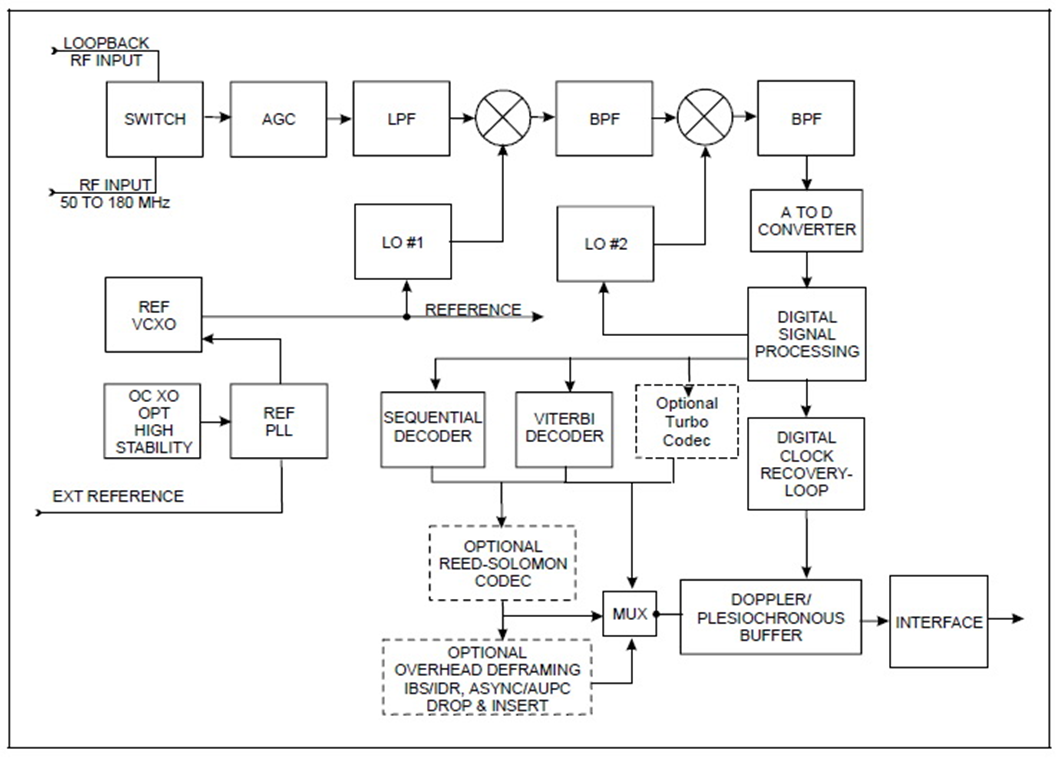Demodulator / Demodulation
Demodulator - a device used to recover the original modulating signal from a modulated wave. A demodulator is also known as a detector.
In communications systems and in some automatic control systems, the information to be transmitted is first impressed upon a periodic wave called a carrier. The carrier is then said to be modulated. After reception of the modulated carrier, the original modulating signal is recovered by the process of demodulation or detection.
The amplitude, frequency, or phase of a carrier may be changed in the modulation process. Therefore, the process of demodulation and the practical circuits for accomplishing it differ in each case. However, all demodulators require the use of a nonlinear device in order to recover the original modulating frequencies, because these frequencies are not present in the modulated carrier and new frequencies cannot be produced by a linear device.
A semiconductor diode is frequently used to demodulate an amplitude-modulated (AM) carrier. A simple filter consisting of capacitance and resistance is used to eliminate the carrier and other undesired frequencies from the output of the demodulator. Another common AM detector uses a multiplier circuit, available as a semiconductor chip. A square-law detector is often used to demodulate single-sideband (SSB) signals. A multiplier chip with both inputs tied together serves nicely as a squaring circuit and may be used as a low-distortion demodulator for SSB signals.
Frequency-modulated (FM) signals and phase-modulated (PM) signals may generally be demodulated by the same type of circuits, the only difference being the filter circuits in their respective outputs.
There are two basic classes of FM or PM demodulators. The first type, known as discriminators, use tuned circuits to change frequency or phase variations into amplitude variations and then use amplitude-demodulating devices such as diodes or a multiplier to recover the modulating frequencies. The second class or type of FM demodulator is the phase-locked loop, which includes a phase detector that may be a multiplier, a low-pass filter, and a voltage-controlled oscillator that produces a frequency proportional to its control voltage. The output of the phase detector is proportional to the phase difference between the incoming FM or PM signal and the voltage-controlled oscillator output. This phase detector output, after filtering, is the desired original modulating signal and also provides the control voltage needed to keep the voltage-controlled oscillator locked to the incoming signal frequency. These phase-locked loops are available as integrated semiconductor circuits, or chips.
Amplitude modulation and demodulation may be accomplished with the same device. For example, a multiplier performs both of these functions. In addition, phase-locked loops incorporate all the basic circuits needed for the modulation and demodulation of FM, PM, and AM signals. Therefore, circuits have been devised that will either modulate or demodulate FM, PM, and AM signals. These circuits are known as modems and are commonly used in modern communications systems.
A carrier wave may be modulated in both amplitude and phase simultaneously when a digital signal is being transmitted. The commonly used system employing this technique uses a 90° phase modulation and a two-level amplitude modulation and is called quadrature amplitude modulation (QAM).
The development of optical demodulators came with the advent of optical-frequency communications systems.
